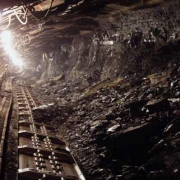Who will pull the curtain on the first gas-electric 18 wheeler/excavator/locomotive
/2 Comments/in Long Articles/by Rudolf HuberLads, it’s crazy. I have always asked myself why there is so much diesel-electric but there is so little gas-electric. Ever since I have discovered the great potential of LNG (CNG) as fuel at least.
Do you need an economic rationale to get going? Let me give you one that will pull your socks off.
Ready?
Before we pull into the harbor of my thoughts, let’s take stock. Because I firmly believe that big trucking is going to change. And it’s useful to drill down on the issues.
Current trucking thrives on the diesel engine. The diesel engine has been a miracle in reliability and torque. Diesel as a fuel carries great energy density and you can fuel up even the biggest truck in a matter of minutes. And in the case of long-distance trucks, this filling gives you way more than 1000 km (700 miles) range.
It’s no surprise that the diesel engine took the world by storm. The only environment that is not suited for it is the deep Arctic. The diesel in those engines freezes. That said, even this has been taken care of by technology.
The diesel engine has only one real problem. And it is a killer problem.
If we dispassionately look at fuels, diesel is on the very trashy side of the fractionation column. This means that not only is it a pretty wild cocktail of a whole plethora of hydrocarbons. It also produces very nasty exhaust gasses when it burns, and I am not talking about CO2 here. Two of the nastiest substances coming out of the diesel exhaust are Nitrogen Oxides (NOx) and Fine Particulate Matter (PM). I will concentrate on the PM here but that does not mean that NOx is a thing to be neglected. It’s toxic and most developed countries limit its dumping into the atmosphere.
Modern types of diesel engines also seem to filter fine PM out of the exhaust stream. Yet, since VW we know that much of this is a sham. The industry has figured out that single particles are smaller when the temperature and the pressure in the engine are high. The drawback is that those finer particles are even more toxic than the bigger ones before. Legislation has not yet been seen through the deception. Hence we inhale this toxic, but unregulated nano-dust in never-before-experienced quantities.
The diesel engine cannot be clean and remain cheap to use. Producing a reliably clean diesel would make the engine very expensive. Many economies would take a dip because of all this extra cost. So we swindle the vehicle industry by allowing them to break the law.
But, no matter what is being done to save the diesel – in the mid- to long-term diesel is doomed and will have to be replaced.
Those who know me will not be surprised to read that I am a lifelong advocate of Natural Gas as a fuel. CNG is for smaller vehicles or those on short commutes and LNG is for those with more extensive needs. This should solve the problem because LNG as a fuel behaves much like diesel. It’s easy and quick to refuel and one tank filling gets you way beyond 1000km. All this without many of the nasty side effects. Great.
There is still one drawback. Gas engines are not known to provide a lot of torque. At least when one takes diesel engines and makes them run on Natural Gas. The engine may feel a bit flimsy at times. Trucks running on NG tend to be taken for tours that don’t include lots of steep roads or other forms of hard labor. Plus, it’s hard to put those engines into construction or digging machines. Those beasts need torque even more for what they do.
E-motors on the other side are veritable torque monsters. They crank out huge power pretty much from the first second. Their problem is batteries that are big, expensive, and hard to handle. It’s unpractical for most purposes.
But what if someone combined the two?
The core principle has been in use for decades now in all kinds of heavy diesel applications. They use a diesel engine to produce power and electric drives to power the vehicle. There is no direct power transmission between the diesel engine and whatever needs moving. The same could be done with gas and applications are doing exactly this.
Even simpler, you have an onboard internal power plant that produces electricity on demand. It is using liquid fuels that carry great energy density and provide a range. Diesel-electric is not exactly a new thing in shipping. Or for many other heavy horsepower applications. Look at those big mining trucks from Belorussia, the Belaz 75710, the biggest in the world that runs on diesel-electric. Gas-electric works along with the same principles. Look at one of the biggest warships of the US Navy, the USS Zumwalt. It uses a gas turbine to produce electricity for the boat.
If you think that electric drives cannot be powerful I beg you to think again. The biggest US aircraft carriers with more than 100.000 tons of deadweight are being propelled by electric drives. They reach insane speeds for marine vessel standards. They take their primary energy from nuclear fuel instead of gas but the principle is the same. Produce electricity to propel the vehicle. Same for those monster submarines that can loiter for weeks.
Why should that be different for an 18-wheeler truck? Let’s imagine that all the wheels of the truck are equipped with electric drives. That makes the truck the ultimate torque monster.
https://en.wikipedia.org/wiki/Diesel-electric_transmission
It has been done with gasoline, it is being done with diesel. There is no reason on earth that it would not work as well with Natural Gas.
This one is for the tinkerers out there. There are LNG-fueled and powered trucks, there are diesel-electric trucks. Combine the two and make it a gas-electric truck. It’s simple for the vehicle engineers.
Take the diesel-electric truck and pull out the diesel engine. Remove the diesel tanks and all the other stuff that’s diesel. Attach a standard LNG fuel tank. Put in a standard and small gas engine and a vaporizer tube and that should be it. The range should be like the diesel-electric which means 4 digit km per filling. Plus, the truck could be made a plug-in. It could recharge the buffer battery overnight for full-electric driving for the first hour every morning. The gas engine would kick in only if the buffer ran down.
This would be a very clean vehicle. Not only is this a clean gas engine that does not even cause some of the nastiest components in diesel exhaust streams. It’s also an engine that runs on a very even regime. This means that it burns fuel optimally and with a lot less nasty exhaust than a comparable full gas truck.
What’s the problem holding you back folks? The transport world waits for this. If you can show that it works well, you have a new iPhone as this will sell like crazy.
I am not a mechanical engineer but many out there are. Get up and go. I want to see some of you guys getting rich while the world gets rid of diesel.














This is the first article I read in LNG guru. I just subscribed to the blog yesterday. The idea is crazy. I agree that environmental condition is main issue in diesel usage in transportation. I hope LNG can be a solution
Rifka, thanks for your comment and please, spread the word. Old habits are hard to loose and it’s time we got some techies tinkering on this. Maybe it’s not the solution but it’s well worth a try. Saving the planet can make economic sense. Thanks again.